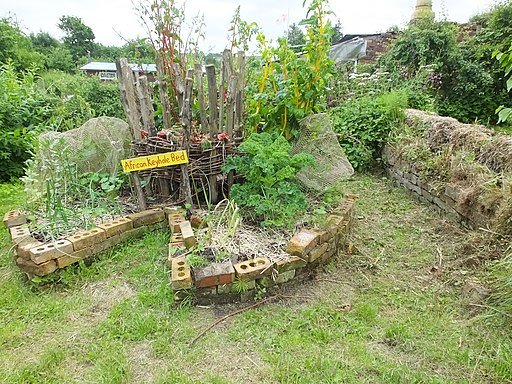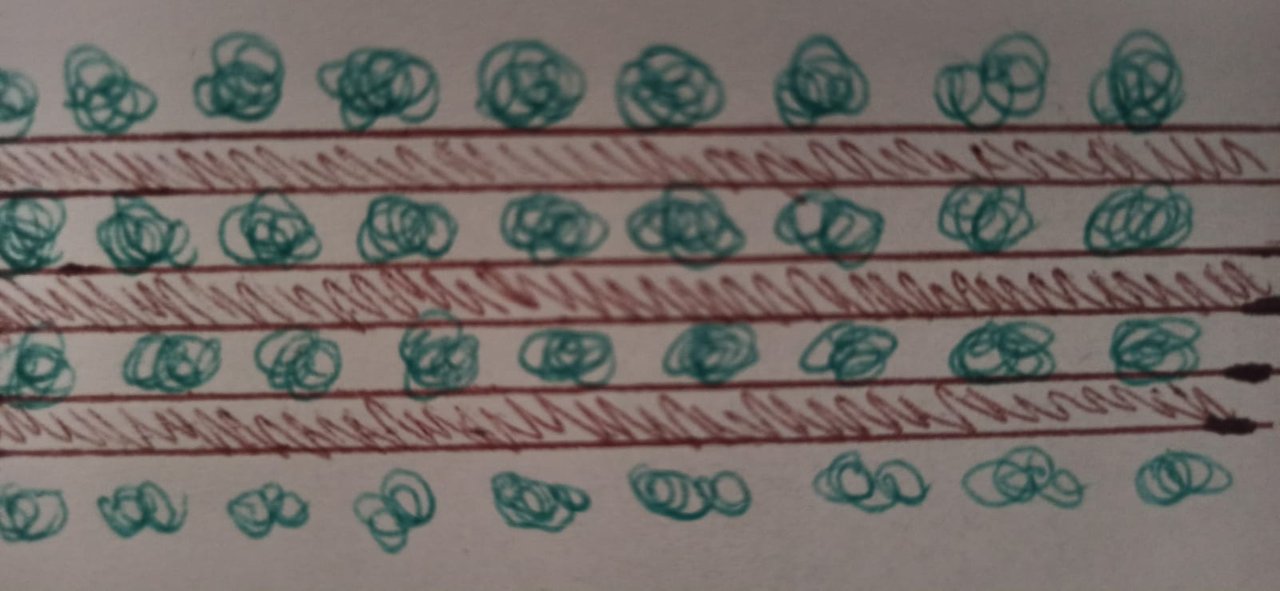Permaculture - The keyhole bed of Toby Hemenway and improved version from Lesotho (lesson 27)
9 comments
The keyhole bed
 source - example of the keyhole bed from Zimbabwe
source - example of the keyhole bed from Zimbabwe When designing the vegetable garden, we got used to its rectangular shape, cut with long paths allowing us easy access to all plants. Of course, this is one of the many options, and if you want your garden to look like standard, you can use it, but there are more effective solutions.
Space for paths is necessary, but it is worth doing our best to minimize it. The ground under the footpaths does not produce any crops, so it is somewhat of waste in our garden. The development of every square meter is particularly important when we only have a small garden. So how do you do it most effectively?
One of the fathers of Permaculture, Toby Hemenway, proposes to arrange beds in the shape of a keyhole. In his book "Gaia's Garden", which every permaculturist should know (if you haven't read it yet, I highly recommend buying a book or e-book), he compares three different methods of arranging flower beds:
- in the most basic one, known from many home gardens - in a rectangle cut by paths, as much as 50% of the earth's surface is occupied by paths and other crop failures.
- in gardens with raised beds (which I will talk about soon), with paths every three or four beds, waste occupies only 30% of the area.
- the last method, i.e. the keyhole, is a garden where the paths take up less than 25% of the space.
 Standard beds - 50% of garden effectiveness
Standard beds - 50% of garden effectiveness .jpeg)
optimized raised beds - 70% of effectiveness
.jpeg)
The keyhole beds - 75% of effectiveness
As you can see in the photo, such a garden has the shape of a circle, and a short path leads us to the central point from which we have access to most of the plants. The efficiency is additionally rewarded with the unusual, beautiful nature of the garden.
However, there are many more advantages to the keyhole method. Let's try to list most of them:
- higher productivity, less space taken up by paths
- interesting aesthetics
- greater interaction between different plant species, and thus the possibility of increasing their positive allelopathic effects and better growth
- reduced risk of the spread of plant diseases by enriching the biodiversity in the flower bed
- more natural shapes of sowing plants (in nature, straight lines with the sowing of the same species are practically non-existent)
- the possibility of creating sunscreens by sowing tall plants on the edge of the flower bed on the north side and keeping the heat longer in such a semi-closed space, which increases the yield
- facilitating the watering of the garden
- reducing the work of the gardener who does not have to move around with tools while weeding weeds or harvesting vegetables
When designing a larger garden, you can include a spiral with many flower beds arranged in the shape of a keyhole, for example like this:
.jpeg)
All drawings made by @papi.mati, inspired by Toby Hemenway's pictures
African Keyhole Garden
The idea of Toby Hemenway was improved and adapted to the African harsh environment by permaculturists from Lesotho and then it spread around the world. Lesotho version contains the compost pile in the middle of the construction. As the compost breaks down, it leaches to the soil around, providing nutrients to the plants. That version minimizes the work in the garden. You basically have to provide the compost and water the garden, nothing else is needed.
To check how to compost, what is allowed to include in the compost pile and what we should avoid, check the lesson about composting (links to the previous lessons at the end of this post).
How to build African Keyhole Garden
All my lessons are shared totally for free with a CC-0 license (which means you can copy my text and share it wherever you want to, without the need to mark me as an author). I hope it will bring you joy.
Previous lessons can be read here:
Fertilizers
2 - types of manure and when to use it
3 - Compost. Basics
4 - advanced composting
6 - Green manure
7 - Phytosanitary plants
8 - Mineral fertilizers
--------------------------------------------------
Soil and minerals
10 - Boron, Molybdenum, Copper, Magnesium
11 - Zinc, Calcium, Iron and other elements
12 -soil components: sand and clay
14 -soil components: calcium, microorganisms, minerals
15 -soil components: water and air
--------------------------------------------------
Space
17 - Sectors in Permaculture
18 - Zones & sectors, practical use
19 - Perfect size of your garden
20 - What to choose lawn or meadow?
22 - Water reservoirs in the garden
23 - Rock Garden
24 - Patchwalks
--------------------------------------------------
Basics of traditional permaculture
25 - Three ecological principles from the Gaia's Garden School
26 - Basic tips for permaculture gardeners
Thank you for reading,
@papi.mati
Comments